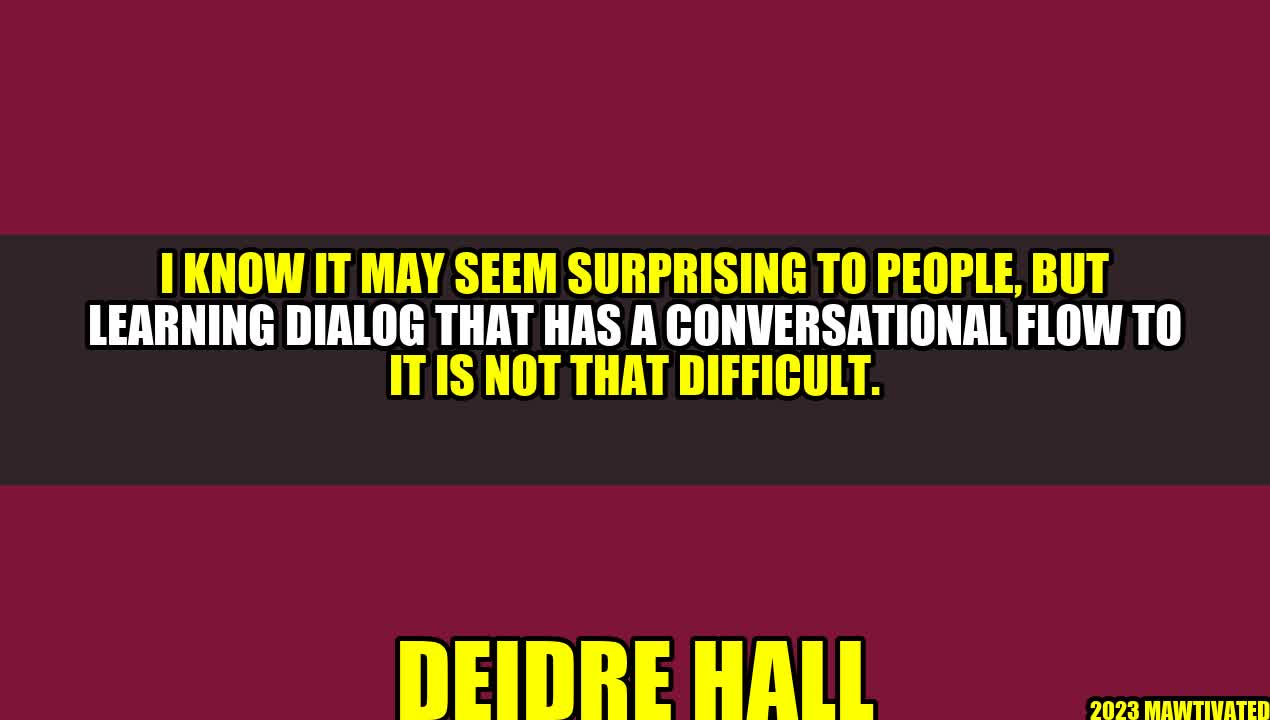The Power of Conversational Dialog

Let me tell you a story about my friend, Deidre Hall. Deidre is a successful businesswoman who used to struggle with public speaking. She was always nervous when she had to give presentations to her colleagues or clients.
One day, Deidre attended a workshop on conversational dialog. She learned how to communicate with people in a more natural and authentic way. She discovered that dialog is not about memorizing lines or scripts, but about connecting with people.
Deidre started incorporating conversational dialog in her presentations and meetings. She noticed a significant change in her communication skills. She was more confident, engaging, and persuasive. Her clients started giving her more business, and her colleagues started respecting and listening to her more.
Deidre’s success story is an inspiration to all of us who want to improve our communication skills. Conversational dialog is not only essential for business success but for personal growth as well. It can help us build meaningful relationships, resolve conflicts, and express our feelings and ideas more effectively.
Learning Conversational Dialog
Now, you may wonder, how can you learn conversational dialog? Isn’t it difficult to remember all the lines and cues?
Well, the truth is that conversational dialog is not about memorization. It’s about understanding the flow of a conversation and responding to it naturally. It’s about being present and listening to the other person.
Here are some tips on how to learn conversational dialog:
- Observe how people talk to each other in real life situations. Listen to their tone, pace, and word choice. Notice how they react and respond to each other.
- Practice speaking out loud. Record yourself and listen to your voice. Pay attention to your tone, pace, and articulation.
- Use body language to convey your message. Eye contact, gestures, and facial expressions can add depth and meaning to your words.
- Be authentic and genuine. Don’t fake your personality or emotions. People can sense when you’re not being yourself.
Examples of Conversational Dialog
Here are some examples of conversational dialog:
Person A: Hey, have you watched that new movie?
Person B: No, not yet. Is it good?
Person A: Yeah, I loved it. The plot is intriguing, and the performances are outstanding.
Person B: Sounds interesting. I’ll watch it this weekend.
This is an example of a casual conversation between two friends. They exchange opinions and ideas about a movie they both enjoy.
Speaker A: Good morning, everyone. I’m glad to be here today to present our new product line.
Speaker B: Excuse me, can you speak louder? I can’t hear you.
Speaker A: Of course. Is this better?
Speaker B: Yes, thank you.
This is an example of a formal presentation where the speaker adjusts their tone to the audience’s needs.
Conclusion
In conclusion, conversational dialog is not as difficult as you think. It’s a skill that can be learned and improved over time. By observing, practicing, and being authentic, you can become a better communicator and connect with others on a deeper level.
Remember these three points:
- Conversational dialog is about understanding the flow of a conversation and responding to it naturally.
- Practice speaking out loud and using body language to convey your message.
- Be authentic and genuine in your interactions with others.
Hashtags
#conversation #dialog #communication #skills #authenticity
SEO Keywords
conversational dialog, communication skills, authentic communication, natural conversation
Article Category
Business Communication, Personal Growth, Self Improvement

Curated by Team Akash.Mittal.Blog
Share on Twitter
Share on LinkedIn